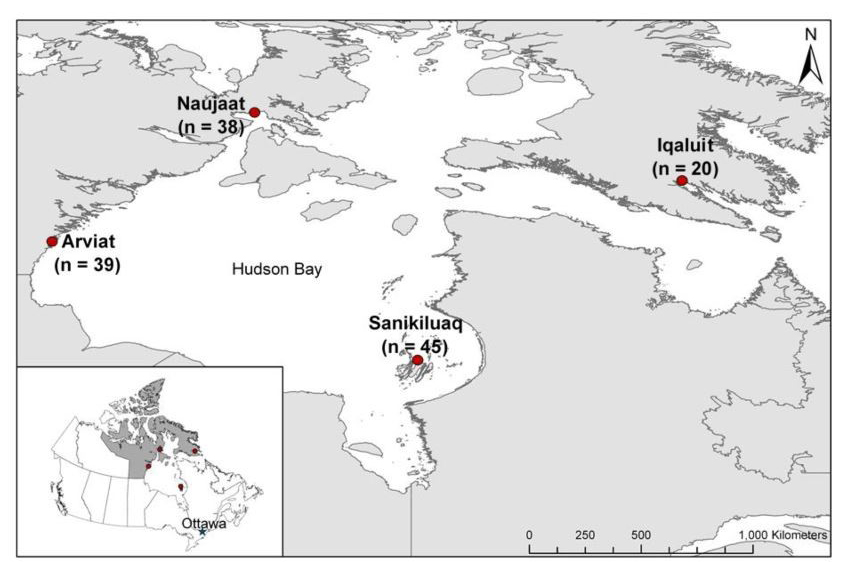Many of us have been touched by images of the tragic consequences of plastic pollution filling the stomachs of animals. Plastic pollution is a major concern in many ecosystems across Canada. Past Science Behind the Scenes articles have examined the extent of plastics found in seabirds, such as the Cassin’s Auklet, a bird found in the North Pacific Ocean.
ECCC Wildlife Health Unit Head Jennifer Provencher with the Canadian Wildlife Service was one of the authors of a recent paper published in Marine Pollution Bulletin. She studied stomach contents of Arctic seals hunted between 2007 and 2019, and the results were surprising.
Over the past 15 years, Provencher has discovered plastic debris in many Arctic bird species. More recent work on plastic additives found there were contaminants in both seabirds and seals (see example here), leading researchers to believe they might also find plastics in the stomachs of Arctic seals. However, to their surprise, none of the 142 seal stomachs they examined contained plastic particles larger than 425 micrometres (the width of approximately four human hairs). This finding is important in understanding how polar bears and other top predators may be exposed to plastic pollution.
The journal article notes that unlike Arctic seabirds from the same region, seals are either “not as exposed to plastic pollution when feeding; not ingesting plastics if they are exposed to plastic pollution when feeding; and/or not retaining plastics in their gastrointestinal systems” (p. 3).
Collaboration is Key
ECCC researchers collaborated with various Inuit hunter and trapper groups. These groups contributed samples from a number of communities in Nunavut - Arviat, Naujaat, Sanikiluaq, and Iqaluit.
The study was made possible thanks to ongoing partnerships with ECCC researchers in the North. While hoping to receive 40 stomachs for their research, they received more than 140 Provencher says “thanks to our relationships with hunters, students, and other researchers, we were able to quickly get the samples in a collaborative way.”
Inuit hunters recorded the species, sex, and body measurements of the seals and removed the seal stomachs. The stomachs were then shipped to the National Wildlife Research Centre in Ottawa, for dissection and inspection for plastics with partners at Carleton University.
While the results are good news, it does not rule out the possibility that seal stomachs contain microplastics that are less than 425 micrometres (μm). However, plastics smaller than 425 μm are less of a concern since they are less likely to accumulate in the stomach, and thus cause the negative effects most likely to be associated with plastic pollution.
The study provides a useful baseline for further exploration of plastic pollution in the Canadian Arctic. This includes more work to understand how polar bears are exposed to plastic pollution in the environment given that Inuit hunters are reporting plastic pollution in the stomachs of polar bears in Nunavut.
While there is always the possibility for an increase in ingested plastic pollution by animals in the future, Provencher is hopeful.
“If we can keep plastic pollution in the environment from increasing, then we wouldn’t expect to see negative changes,” she says.
What’s Next?
Provencher says the focus now is to communicate results back to the local communities in the North and work with them to test other species, such as polar bears, that communities and hunters are concerned about when it comes to plastic pollution.
She also hopes to see if the promising findings from the Eastern Arctic are similar to those in the Western Arctic, including the Beaufort Sea (northern Northwest Territories and Yukon).
In the coming months, ECCC scientists will also present the findings to the Arctic Council’s newly formed Litter and Microplastic Expert Group under the Arctic Monitoring and Assessment Program (AMAP), which Provencher currently co-chairs. The Expert Group is currently developing a plan for plastic pollution to track trends across time and space in the Arctic.
You can read the full paper in Marine Pollution Bulletin here.

The map shows the location and number of hunted seals in various locations across Nunavut that were collected for the study.
